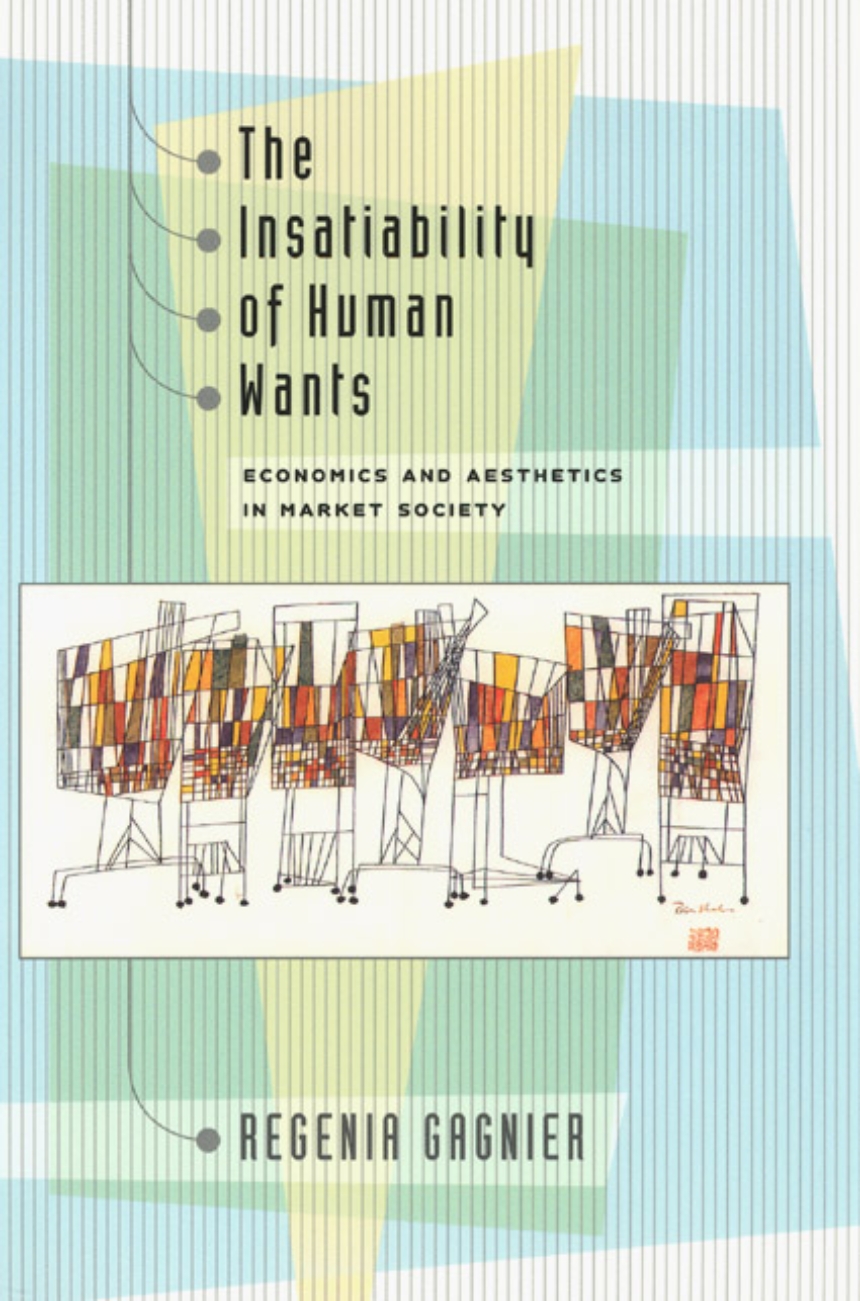The Insatiability of Human Wants
Economics and Aesthetics in Market Society
9780226278544
9780226278537
The Insatiability of Human Wants
Economics and Aesthetics in Market Society
What is the relationship between our conception of humans as producers or creators; as consumers of taste and pleasure; and as creators of value? Combining cultural history, economics, and literary criticism, Regenia Gagnier’s new work traces the parallel development of economic and aesthetic theory, offering a shrewd reading of humans as workers and wanters, born of labor and desire.
The Insatiability of Human Wants begins during a key transitional moment in aesthetic and economic theory, 1871, when both disciplines underwent a turn from production to consumption models. In economics, an emphasis on the theory of value and the social relations between land, labor, and capital gave way to more individualistic models of consumerism. Similarly, in aesthetics, theories of artistic production or creativity soon bowed to models of taste, pleasure, and reception.
Using these developments as a point of departure, Gagnier deftly traces the shift in Western thought from models of production to consumption. From its exploration of early market logic and Kantian thought to its look at the aestheticization of homelessness and our own market boom, The Insatiability of Human Wants invites us to contemplate alternative interpretations of economics, aesthetics, and history itself.
The Insatiability of Human Wants begins during a key transitional moment in aesthetic and economic theory, 1871, when both disciplines underwent a turn from production to consumption models. In economics, an emphasis on the theory of value and the social relations between land, labor, and capital gave way to more individualistic models of consumerism. Similarly, in aesthetics, theories of artistic production or creativity soon bowed to models of taste, pleasure, and reception.
Using these developments as a point of departure, Gagnier deftly traces the shift in Western thought from models of production to consumption. From its exploration of early market logic and Kantian thought to its look at the aestheticization of homelessness and our own market boom, The Insatiability of Human Wants invites us to contemplate alternative interpretations of economics, aesthetics, and history itself.
262 pages | 6 x 9 | © 2000
Economics and Business: Economics--History
Literature and Literary Criticism: General Criticism and Critical Theory
Table of Contents
Acknowledgments
Introduction
1: On the Insatiability of Human Wants: Economic and Aesthetic "Man"
2: Is Market Society the Fin of History? Market Utopias and Dystopias from Babbage to Schreiner
3: Modernity and Progress toward Individualism in Economics and Aesthetics
4: Production, Reproduction, and Pleasure in Victorian Aesthetics
5: Practical Aesthetics: Rolfe, Wilde, and New Women at the Fin de Siècle
6: Practical Aesthetics II: On Heroes, Hero-Worship, and the Heroic in the 1980s
7: Practical Aesthetics III: Homelessness as an "Aesthetic Issue"
Conclusion
Appendix: Taste, or Sex and Class as Culture
Index
Introduction
1: On the Insatiability of Human Wants: Economic and Aesthetic "Man"
2: Is Market Society the Fin of History? Market Utopias and Dystopias from Babbage to Schreiner
3: Modernity and Progress toward Individualism in Economics and Aesthetics
4: Production, Reproduction, and Pleasure in Victorian Aesthetics
5: Practical Aesthetics: Rolfe, Wilde, and New Women at the Fin de Siècle
6: Practical Aesthetics II: On Heroes, Hero-Worship, and the Heroic in the 1980s
7: Practical Aesthetics III: Homelessness as an "Aesthetic Issue"
Conclusion
Appendix: Taste, or Sex and Class as Culture
Index
